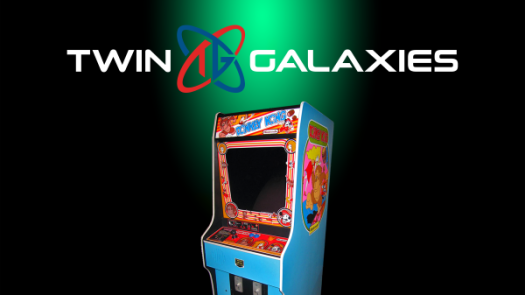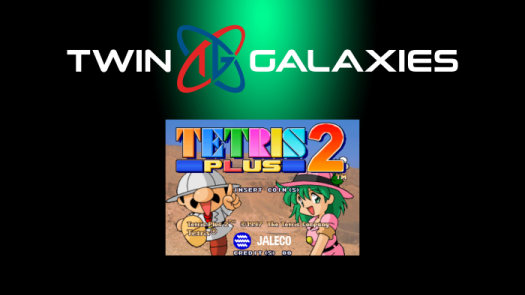When you step into the front office of "R Mustangs," a 3,000 square foot garage in the heart of San Francisco's SoMa neighborhood, you're bound to overlook the wooden plaque hanging behind Rick Mori when he first greets you. But then again any wall-mounted inscription would have trouble vying for the attention of customers looking to book an appointment or hoping for the chance to take a peek at Rick's latest car projects out back.
With the opening of his business in 1990, Rick has been restoring and repairing 1960s era Mustangs and other classic Fords in the Bay area for over 30 years. In that time, Rick has nurtured a loyal customer base and established a strong reputation in the Mustang enthusiast community for his singular expertise and passion to share it with others.
The overlooked plaque can be seen as an early expression of those same qualities, although the subject isn't about cars. The inscription is cast in the form of a personal letter anchored by a monochrome image of two boys standing in front of a row of Pac-Man arcade cabinets. And affixed in the bottom corner is a signature and a 25 cent coin.
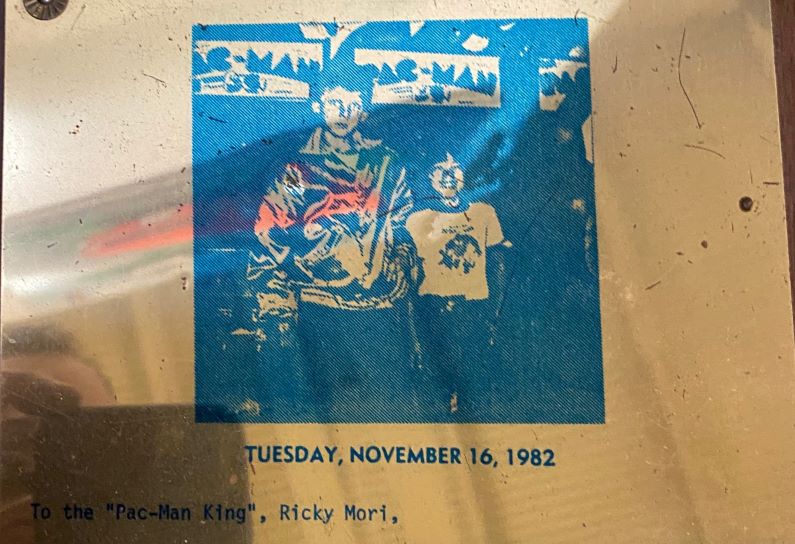
"I want to thank you for showing me the key pattern," the letter reads. "If you didn't show me I wouldn't have ever made the Pac-Man machine go to split screen and double images."
Hinting at an imposing past, a 14 year old Rick depicted in the photo is addressed as the "Pac-Man King." The younger boy beside Rick who authored the letter, Jeffrey Yee, would go on a publicity blitz in 1983 as the youngest Pac-Man champion in the world with one of the highest scores ever claimed on the game. But nearly forgotten to time, the two gamers would meet in a head-to-head contest broadcast on television. In the end, only one reached the famed Pac-Man split screen, which ends the game. In doing so, his effort would also go on to serve as the earliest known recording of the game-ending phenomenon ever documented.
And the contest winner?
Here's a hint: It was the last time he played Pac-Man.
CALIFORNIA DREAMIN'
When I talked to Rick, he was just wrapping up a conversation with a customer who was dropping off his car. Within moments, Rick was taking me on a tour of arcade life in 1980s California.
"In 1979 or 1980, we couldn't wait to get to Yum Yum Ice Cream," he recalled, navigating through the different games one would find in San Mateo where he lived at the time. "We would go to the shop after school and play Asteroids, and that was it."
In an attempt to save some quarters, his parents bought an Magnavox Odyssey2 home console for the family, but it wasn't a match for the arcade experience.
"The graphics were super cheesy," offered Rick straight away.
In 1981, Rick's family moved back to San Francisco and settled in the storied neighborhood of North Beach, which was only a short distance from San Francisco Bay and one of the busiest tourist areas in the city known as Fisherman's Wharf. And the Wharf's crown jewel was Pier 39, a veritable electronic paradise.
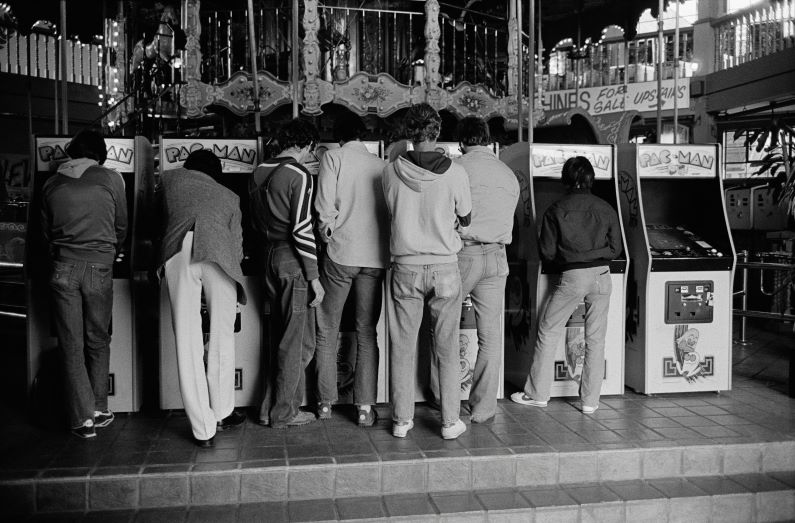
When arriving at the Pier, Asteroids was yesterday's news. Rick was ready for something new.
"They had 20 Pac-Man machines at one time," marvelled Rick, hinting at the majesty of the place. And that was just one title among dozens. But Pac-Man caught his eye.
"Eating things was easy to figure out," Rick shared. "Playing Defender, on the other hand, you had multiple things to do with your hands. That wasn't the case with Pac-Man."
That's not to say that Rick was immediately hooked. He divided his time between games like Satan's Hollow, Donkey Kong, and Robotron, as well as Burger Time, where he earned an impressive 3 million points as a high score.
Things were slower with the yellow dot muncher.
"I got to about 250,000 points on Pac-Man on my own," Rick said, "but no further."
The Pac-Man craze of the early 80s yielded not only a hit music single, a cartoon series, and seemingly endless branded products from pillows to lunch kits, but also strategy guides.
Rick bought one and went to work.
"The book had a double-back pattern," he remembered, "but I kept messing up the timing."
UNSUNG CHAMPIONS
Confounded in his attempts to increase his score, Rick branched out into other area arcades to rub elbows with other players and maybe learn a tip or two.
"There were legends all over the city," recounted Rick, listing off arcades such as Cliff House by the Beach, Landmark, the Mechanical Museum, or in Japantown.
"You would go to other people's arcade, their home turf," he continued. "Names like Andrew Toy, who was an expert at Track 'n' Field and Hypersports, or others who mastered games like Robotron. The culture was super rich."
One day, Rick was hanging out at an arcade about a half mile from the Wharf named Columbus Video owned by his friend's dad Lance Hughston when he spotted a new player.
"There was this dude, playing by himself [on Pac-Man]," recalled Rick looking back at the afternoon. "He just kept playing, and he had all the keys on the screen."
Rick watched the game for about 20 minutes, making mental notes about the patterns the player used as he marched through level after level. Witnessing the stranger at work was transformative.
"I never learned the guy's name," he shared. "He was a pro but I never saw him again to thank him."
THE BIG GAME
Rick didn't waste any time combining the lessons of the strategy guides and his field research, heading for the same machine that was used by the anonymous master the previous day.
With a group of friends in tow bearing food and drink, he settled into his game, bursting through the 250,000 point barrier. Excitedly, the friends watched as Rick blew past one million. Then two million came and went.
John Wong, the owner of neighboring Columbus Camera, was tending the arcade and thought that Rick's game might be newsworthy. He put in a call to the San Francisco Progress, who sent a journalist and photographer to check out all the fuss.
And then finally, Rick rolled past 3 million points. Everything seemed in place to report a big score, but his game came to an abrupt end - the machine glitched and there was no way to continue the game, leading to a final score of 3,170,650 points. Strange, but machines can malfunction from time to time, right?
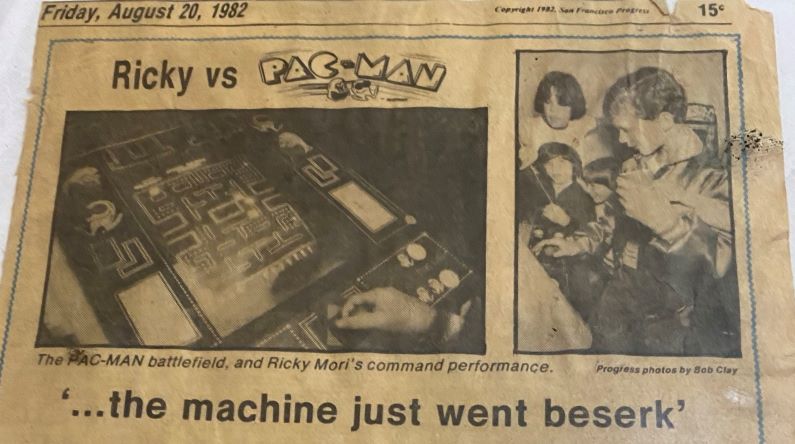
John wanted to see if Rick had won bragging rights for the highest Pac-Man score, so Lance went to work leafing through video game magazines and discovered a site claiming to be a scoring authority named Twin Galaxies. He made a long-distance call to Ottumwa.
"When Lance found out the record was 5 million points, we started reeling," Rick remembered.
So the group made a plan - Rick would make another attempt the following week.
The next Monday, Rick headed down to the arcade again with a supply of Coke, ham, and grapes to fuel his game. With Lance looking on and friends offering moral support, Rick hoped that this time the machine would behave and he'd have a shot getting his name into the Guinness Book of World Records.
One hour ticked by. Then two. Then three. By the fourth hour, Rick was cruising past the three million point mark with two lives in reserve.
Then the machine glitched out again.
Final score: 3,171,170 points.
As before, half the screen was normal, but the other half of filled with random graphics.
"Although we didn't know at the time," Rick said, "we discovered that the [Pac-Man] machine quits, taking us about four hours to get there."
Known today as the split screen, Pac-Man ends on Level 256 due to a byte-rollover error where the game counts the screen as board 0. As a result, the fruit drawing routine attempts to draw 256 fruits on-screen instead of the standard seven, which overflows into the playable area.
Despite the setback, everyone felt the feat was still worth celebrating.
"Lance called the [San Francisco Examiner] and they came down and took some pictures and interviewed me," he continued. "It was all brand new at the time."
The problem for Twin Galaxies was that they recorded a score that was impossible to achieve with a single game, denying Rick the new world record title.
Given that the split screen on Level 256 represented an "end" to the game, Pac-Man has a maximum score that can't be surpassed. The standard game settings for Pac-Man was 3 lives plus a bonus, for a total of four. If a player had obtained every conceivable point in the game, including 9 dots that regenerate on the split screen, the maximum total would be 3,333,180 points, well short of the claimed world record cited at the time.
But the definitive end to the game only fueled a range of urban legends about how gamers were able to use secret strategies to navigate their Pac past the split screen to continue their quest for high score perfection. But given what Twin Galaxies reported, Rick assumed at the time that the arcade machine was simply beyond repair and would wait for a new machine to be brought in to solve the glitch issue before he tried again.
"If that machine hadn't busted I'd of played all night," said a 14 year old Ricky in the San Francisco Examiner. "I want to break the world's record, and I want to be on 'That's Incredible,' too."
Lance himself was skeptical that a new machine would make any difference.
"I can't figure out how that other guy got 5 million," he said during the same interview. "The machine's the same, the computer board's the same. I don't think 5 million is accurate."
But that was then.
In all, Rick's Pac-Man exploits were featured in the two newspapers - not bad for a kid playing video games.
But that was just the beginning for the Pac-Man King.
A NEW KID ROLLS INTO TOWN
Rick's story of seeking video game immortality captured the imagination of Pac-Man crazy gamers looking to unlock the secrets of expert gameplay.
"When the paper showed up and printed my story, I started getting letters sent to the arcade asking me for the pattern," Rick shared, laughing at the situation. "There was even one letter that read 'We're an older married couple, we just want to have some fun.'"
In other cases, advice-seeking gamers would head over to Columbus Video to see if they could catch Rick in-person to ask for any tips from the Pac-Master himself. Sometimes they lucked out, or sometimes they ended up speaking to Lance with the advice to try another time.
The day that Jeffrey Yee dropped by Rick's hangout, he was in luck.
"He came into Columbus Video with his dad. They were really nice, down-to-earth people," Rick recalled.
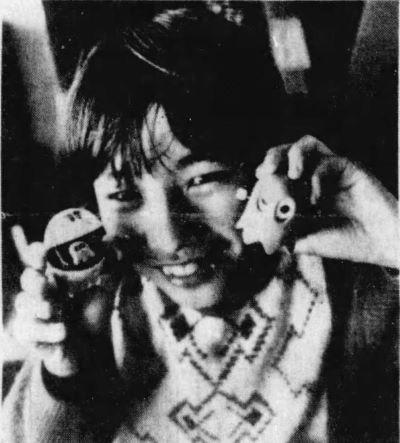
Mr. Yee began introductions, and asked if Rick might be able to demonstrate to his 8 year old son some pattern techniques on Pac-Man.
"He was already a sharp kid and a good gamer," explained Rick, "so I showed [Jeffrey] the patterns."
Jeffrey was a quick learner, and the opportunity to learn more from Rick led to repeat visits to the Columbus Video.
"And then we started to hang out," continued Rick, "and eventually we became really good friends."
In addition to spending time at Columbus Video, the two would explore San Francisco's arcade scene together.
"With his dad and his sister, we would also go down to Malibu Grand Prix, the Castle, and other arcades," he added.
THE KID COMES INTO HIS OWN
Between their first meeting in August and November 1982, Rick remembered that Jeffrey and his dad frequently went down to Pier 39 to play games in what was called informally as "the Pac Parlor." The Pier really wasn't Rick's scene, so he stayed closer to home in Columbus Video. But when the two would meet up, Jeffrey would share news of his latest high score.
Then during the evening of November 17, Jeffrey set the Pier abuzz with a new high score of 5,844,040 points.
"He was at the machine for 8 hours," Rick explained. "His dad allegedly came up with the idea of stitching Jeffrey's games together for the high score."
Stitching was a method of score keeping where a gamer could add the scores from two or more combined games if their machine experienced a game-ending glitch like the split screen. While this practice was permitted by Twin Galaxies at the time, such score submissions were combined with those achieved without stitching, creating doubt about what was attainable with a single quarter game. All of the alleged strategies about "getting past the split screen" only added to the confusion.
In Jeffrey's case, he never submitted his score to Twin Galaxies, possibly because he learned that the scoreboard was now claiming that the new world record was an incredible 8.1 million points achieved by a Houston player on November 5.
But Ottumwa was a long way from San Francisco, and the city was ready to celebrate a new local champion and homegrown "Super Kid."
"BREAK THE MACHINE AND MAKE IT GO BERSERK"
With Jeffrey's claim to the high score, the friends became local rivals as they continued to make media interviews as the local Pac masters.
"We were the two hot players in the city," Rick declared.
And Chris Pray took notice.
Chris was a family friend with an interesting resume. In addition to moonlighting as an actor and nabbing a couple of appearances in Clint Eastwood movies, Chris worked as a writer for the production company behind "Just Kidding," a Bay area television series that was basically a kids-centric variety show.
After hearing Rick's interview on AM San Francisco, Chris pitched the idea of an arcade "showdown" for an episode segment. The show's producers loved the idea, and both friends were shortly confirmed to appear on the program the Monday before Thanksgiving.
When the big day finally arrived, Rick couldn't help but get an early start.
He was ready.
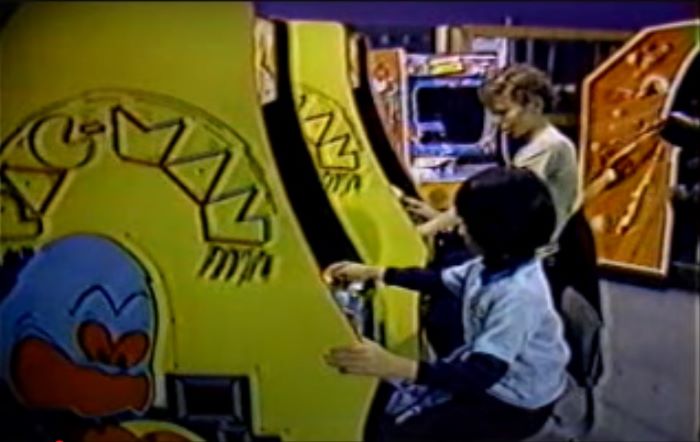
"It felt so cool getting up in the morning to play video games and not getting in trouble," Rick shared, channeling his inner 14 year old self. "It wasn't cutting school to sneak to the arcade, which made it even better."
The two friends gathered at the Fun Arcade in the Wax Museum complex at the Wharf , which served as the location for the shoot.
"It was all set to go, I just showed up," Rick said. "They set up the two machines in a staggered stance. We got our mics on, and after a final light check, we put our quarters in for the camera and started playing."
"Just Kidding" condensed the 4.5 hour showdown into a six minute television segment. According to the on-air host, the stated goal of the encounter was to provide viewers a chance to see someone walk up to Pac-Man and "break the machine and make it go berserk."
"They wanted us to play against each other because they felt they formed a better chance of getting split screen footage with two players instead of just one," Rick offered. "In that sense it was scripted, but the pressure was real."
The pressure or a consistent machine malfunction ended up getting the best of Jeffrey. He lost his Pacs early on, leading to an on-film debrief with his dad and sister. With the field wide open, the chance for viewers to see the split screen fell squarely on Rick's shoulders.
Thanks to the wonders of editing, the next four hours of Rick's game was mercifully whittled down to a few minutes for the kids at home.
During an in-game interview, Rick confided that his love of Pac-Man has become strained.
"I'm just to bored, I'm thinking of quitting right now," he pointed out to the interviewer. "The only reason I'm doing it is for your guys, and to go for a possible world record. [I] never do it for fun anymore."

And then, the magic moment arrived for the cameras - the split screen. It was a command performance as Rick arrived at Level 256 without losing a single Pac-Man en route. The crew hurriedly tried to overlay a transparency of the maze to illustrate the walls on the right side, reasoning that it was simply rendered invisible, when in fact the maze was physically scrambled.
"I don't know who made it, but they told me to put it on," Rick said. "But I waved them away, I was just trying to survive."
With the split screen caught on camera, not only did Rick give the viewers at home a Pac-Man treat, his game also represents the earliest example of the game-ending level on ever caught on film. At a time when rumors about passing the split screen still held sway, Rick's game serves as an important historical document.
But what wasn't caught on film was Rick's decision following the game.
"That was the last time I played Pac-Man," he revealed.
THE NEXT CHAPTER
Despite the on-air setback, Jeffrey's fame would only increase. In December, Jeffrey and his dad put "Just Kidding" behind them by returning to Pier 39 to claim a new world record of 6.1 million points on Pac-Man. The following year, Jeffrey was hailed as "The Wizard" and appeared on TV shows such as "Super Kids," "That's Incredible," and "Starcade," claiming $90,000 in prizes and appearances, including a Parkers Bros commerical. Jeffrey's legacy, however, would be complicated by his claimed score once it was common knowledge that it was a programmatic impossiblity to continue past Level 256 on a standard arcade game.
As for Rick, he enjoyed the challenge of conquering Pac-Man, but was ready to turn the page.
"Once I achieved what I did, other people were able to do so, too," Rick observed. "The time came when it wasn't that big of a deal."
Pac-Man was only a single title, too. There were other titles to take Rick's quarters over the years.
And with the passage of time it was inevitable that the two champions would eventually grow apart, bumping into each other once or twice years after the white-hot glow of Pac-Man popularity had passed.

Rick also decided to save some of those quarters for his first car - a Ford Mustang - that he bought in 1986, which kicked off his current obsession.
"Starting when I was around 20 years old, I turned my love of Mustangs into a business," he said, adding with a laugh, "I didn't know what the hell I was doing."
With appearances in the local media and on national TV series like Discovery's Fast N' Loud, Rick can't help but see some connection to his 15 minutes of Pac-Man fame.
"It's not a coincidence that I was going to do something odd since I had a similar obsession with video games," Rick offered when looking back at his time with Jeffrey. "I think that obsession led me into wanting to be this leader in my field, being an independent entrepreneur. And 30 years later, I'm still doing this business."
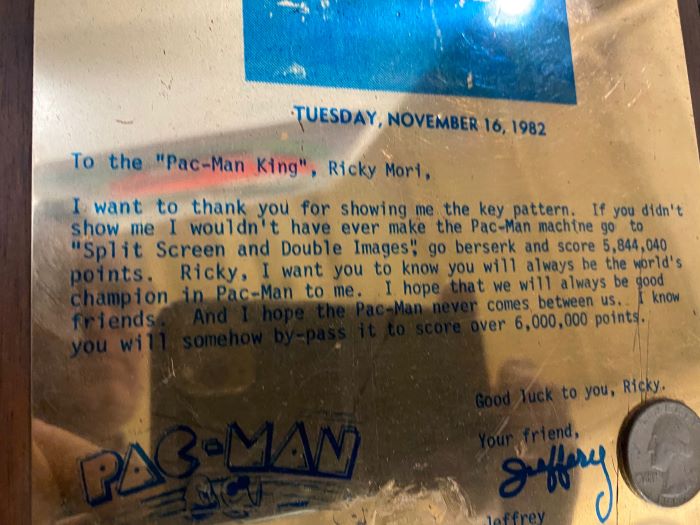
As our talk came to a close, Rick sent me a final photo of Jeffrey's gift to him in 1982, and I was struck again by its placement in a space dominated by the sights and sounds of vintage Mustangs and other classic Fords.
The plaque may not draw a lot of attention, but for those lucky enough to notice and ask, they'll learn that sometimes the most interesting journeys can begin with a single quarter.
To watch Rick's appearance on "Just Kidding," head over to Rob Mori's YouTube channel.
For more photographs from Ira Nowinski documenting San Francisco's arcade scene, you can visit the Stanford Special Collections.
You can also read more about the San Francisco arcade scene from Cat Despira - "5 California Arcades in the 80s: Looking through the lens of Ira Nowinski"




